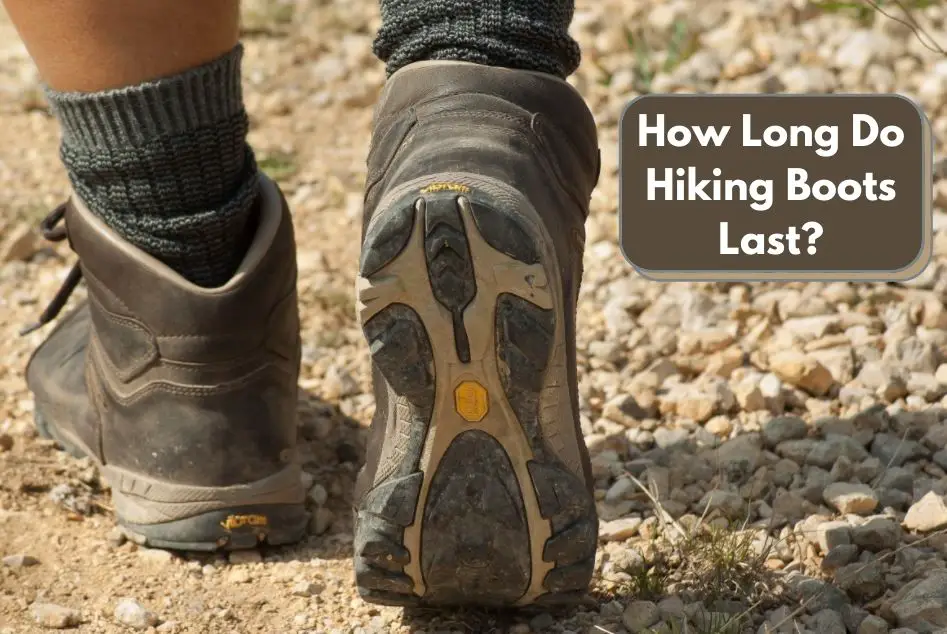Hiking is an extremely popular hobby for millions of people across America, and one thing that every hiker can agree on is the need to have proper footwear like hiking boots or hiking shoes. But how long do hiking boots last? Knowing when to replace hiking boots is critical to your comfort and safety on the trail, which is exactly why we put together this guide.
Most hiking boots last around 500 miles depending on the trail conditions and weather you hike in.
If you are averaging 10 miles of hiking per week, you would expect to go through one pair of hiking boots each year.
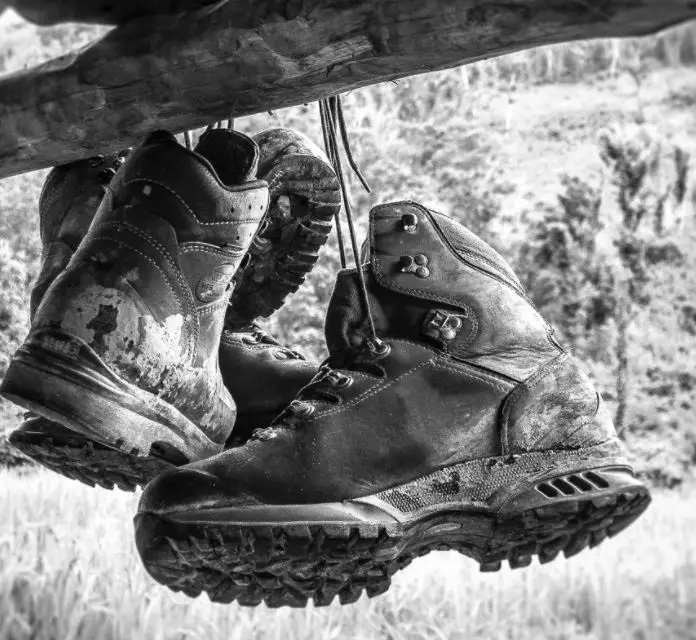
How Long Should Hiking Boots Last?
Although we covered that most boots should last around 500 miles (or one year of average hiking use), not all boots are made the same.
Even some of the most durable hiking boots won’t last past 1,000 miles, while low quality hiking boots may only last 200 miles.
6 Factors That Will Affect How Long Hiking Boots Last
Quality
Higher-quality hiking boots use premium materials and superior stitching that both add extra durability vs cheap hiking boots.
Read plenty of reviews from real users when selecting your next pair of hiking boots.
As always, the adage of “you get what you pay for” applies extra to hiking boots!
The Type Of Hiking Footwear
Whether you choose hiking boots or hiking shoes / trail runners will also affect the longevity of your footwear.
Hiking boots are more robust and have thicker materials, often lasting between 500-1,000 miles.
Trail runners are more lightweight, are made with less materials, and usually last between 300-500 miles.
How Often You Hike
It’s probably obvious that the more you hike, the faster your boots are going to wear out.
Even so, boots that aren’t used often will still age and wear over time.
Where You Hike
If you’re primarily hitting paved trails or flat packed dirt trails, the soles of your boots aren’t taking much damage, and they’ll last much longer than boots that are used for trails with water, jagged rocks, slopes, and roots.
Sharp rocks can wear down the lug pattern on your boots’ soles, while thick underbrush can put extra stress on the upper fabrics, eyelets, and laces.
How You Care For Your Hiking Boots
Boots are like nearly every other purchase you make – the more care you take of them, the longer they’ll last you.
Check out this guide further below for some great tips to help you take care of your boots and get more mileage out of them.
Your Weight
Yes, your weight plays a role in the longevity of your hiking boots, along with any additional weight you carry in your daypack.
The more weight you load on your boots (which is everything on top of them: your body, gear, and all) will wear boots down faster than a lighter load will.
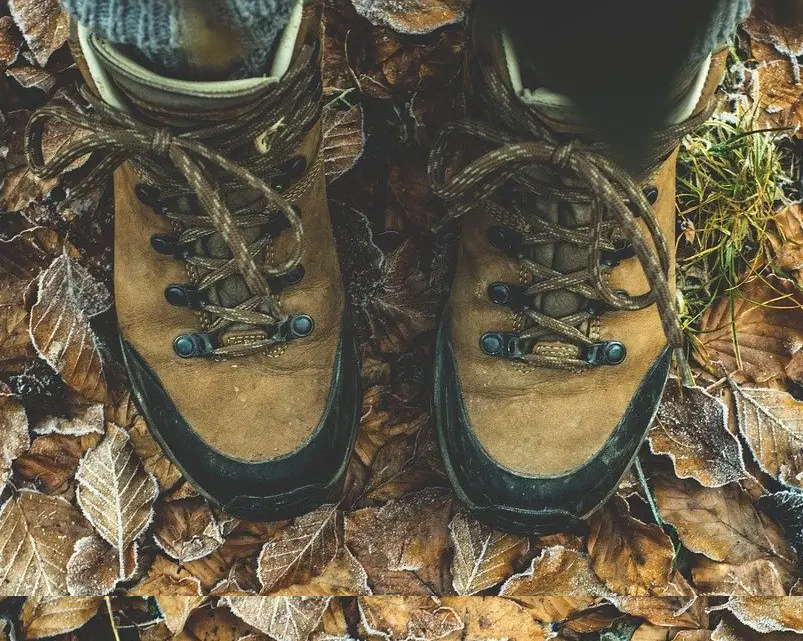
How Often To Replace Hiking Boots
There’s a rule of thumb on how often to replace hiking boots: whenever you think they need to be replaced.
That’s not meant to be a riddle – there are some key signs you should look for to tell you when to replace hiking boots, which we’ll cover below.
When To Replace Hiking Boots: 9 Signs To Look For
They Look Worse For Wear
If your boots show obvious signs like holes and tears or caked on dirt and debris, it may be time to replace them.
Now we don’t mean you should go throw out a pair of boots just because they’re dirty- of course, clean them!
But if there are obvious flaws you cannot fix, or if there is so much crud caked on your boots that it’s affecting their breathability and flexibility, they may have bitten the dust.
Check The Upper And Stitching
Check the exterior of your boots for rips, tears, and cracks, all of which will compromise the stability of your boot and lead to more problems.
If the stitching around the sole or upper is fraying or separated, it’s time for a new pair of boots.
The Eyelets And/Or Lacing Loops Are Damaged
Check out the holes where the boot laces go through. If they’re pulling away from the upper material, or the lace hooks are bent or falling off, it’s going to cause problems with your boots staying tight and not offering enough support which can lead to injury.
The Boots’ Ankle Collars Are Out Of Order
If you’re examining a pair of high-top or mid-rise boots, take a good hard look at the ankle collar: has it lost its cushioning, lost its shape, or is cracked?
If so, you’re risking your safety by not having enough ankle support out on the trail and it’s time to go hiking boot shopping.
Your Boot Has Changed Shape
If your boot has become lopsided, wider, flatter, or otherwise deformed in any way from it’s original shape, you’re risking loss of stability and safety while you hike, leading to falls or other injuries.
If this is the case, it’s time for a new pair of boots!
The Tread Is Worn Down
Traction is critical on the trail, so check the treads of your boots to make sure you’re not missing any lugs and to be sure the tread pattern hasn’t worn down in a way where it won’t provide you with the grip you need next time you’re out.
If that’s the case, you may not be fully out of luck – you can consider having your hiking boots resoled.
Pro tip: if the pair of boots you’re evaluating originally cost you under $100 new, don’t bother having them resoled – just get a new pair.
(If that’s the case, check out our guides to the best men’s hiking boots under $100 and best women’s hiking boots under $100 while you’re here).
Check The Midsoles For Cracking Or Breaking
The midsoles of your hiking boot play a very large part in the overall comfort your boots provide, as it absorbs the impacts of the trail and keeps your feet, ankles, hips, and knees happy.
If the tread has separated from the midsole or if you’ve compressed it all the way down and lost arch support, it’s bye-bye boots.
Your Boots Are No Longer Comfortable
If you’re experiencing new pains, aches, or blisters and hot spots that weren’t there previously, it’s a sign that your boots either no longer fit (which is unlikely), or that it’s time to replace them.
If you think it could just be a matter of a fit issue, check out our guide on how to stretch out hiking boots for a few easy tips to try before tossing your current pair – it could save you some money and help you get extra life out of your boots.
Those (Formerly) Waterproof Boots Are Now Leaky
If your boots used to be waterproof but now you end your hikes with wet feet, the waterproofing has failed.
Most waterproof membranes found in today’s hiking boots are extremely difficult to repair, so if waterproofing is an important feature you will need to go boot shopping.
This doesn’t mean you can’t keep using hiking boots that are no longer waterproof… it just means they’ll no longer keep your feet dry!
You can try neoprene socks for hiking or other waterproof hiking socks to keep your feet dry as you hike, and also try reapplying a hiking boot waterproof treatment as a backup option.
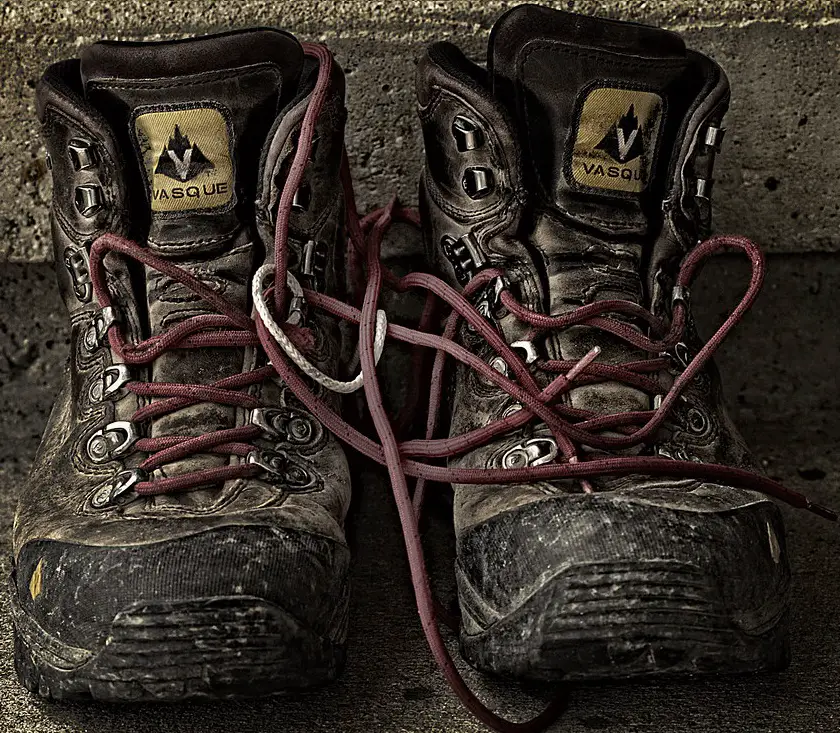
How Do You Know When To Replace Hiking Boots? 3 Tests To Try
The Bend Test
You can tell if your hiking boot remains strong enough to support your body by performing the bend test.
This is used by many of experienced hikers to see what kind of support is left remaining in their boots.
The bend test can be performed in two simple steps:
- Step 1: Take your boot with an opposite end in each hand and try to bend it together, attempting to touch the toe to the heel.
- Step 2: The boot should be harder to bend the tighter you close it together – if your hands can touch or if you can touch the toe of your boot to the laces, your boots are not providing enough support.
The Press Test
The press test is an easy way to confirm if your boot’s midsole is overcompressed.
Place your thumb against the tread pattern on the bottom of your boot and press up into the midsole, looking along the side for compression lines.
If the compression lines are heavy or if it takes a long time for the sole to rebound, then your midsoles are compromised and it’s time to replace those boots.
A suitable pair of hiking boots shouldn’t have any noticeable compression lines.
Try On A New Pair
If you have any concern that your boots are no longer up to task, take yourself to the store and try a new pair on.
Ideally you can try the same brand and even the same model or style of boot to get a proper comparison of what the boot should feel like.
If the new pair is checking all the boxes that your old pair isn’t, it’s time to bring that new pair to the register!
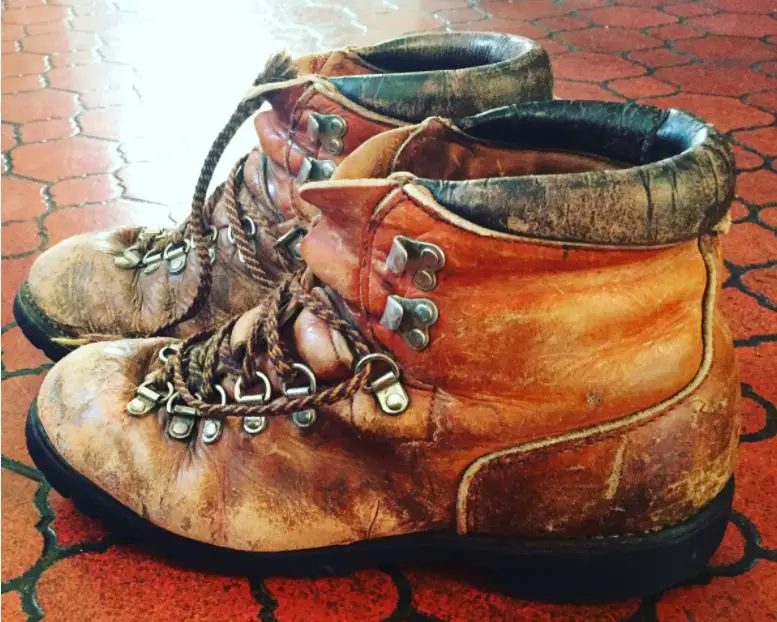
How To Make Hiking Boots Last Longer
As we covered earlier, the better care you give your hiking boots, the longer they’re going to last.
Follow these easy tips to maximize your hiking boots’ lifespan:
Clean the boots after each use with water and a stiff boot brush to keep them free of dirt and debris
Apply leather conditioner and waterproofing treatments after hiking to keep them in good shape
Store your boots in a cool, dry place indoors
Never use direct heat to dry your boots, as it can damage the glues and other materials in your boots. Check out our guide on how to dry out hiking boots for easy boot drying tips.
Avoid hard surfaces like pavement when possible as it can wear down the soles of your boots.
How To Revive A Pair Of Hiking Boots
New Insoles
Most hiking boots have removable insoles, so if you start to lose arch support or if your insoles are no longer getting the job done, simply replace them with a pair of aftermarket hiking boot insoles.
You’ll find that there are many more aftermarket boot insole options that are tailored to your needs compared to the “stock” insoles your boots came with.
Have Them Resoled
You can always have your hiking boots resoled by a cobbler in your area.
Note that the cost of having hiking boots resoled runs anywhere from $80 to $150 and that it depends on what kind of shape the midsole is in as well.
New Laces
If your laces are frayed, they’ll no longer stay put as long which can compromise your ankle support and stability, leaving you open to injury or a fall.
Grab a new pair of hiking boot laces for a cheap way to pep up your hiking boots.
Make sure you know what size laces for hiking boots you need to order to get the correct length.
How Long Do Hiking Boots Last? Frequently Asked Questions
Most hiking boots will last around 500 miles, with higher-end boots lasting up to 1,000 miles.
Trail runners and hiking shoes will last between 300-500 miles on average.
Unless it’s an easily replaceable part like the insoles or laces, it’s time to replace your hiking boots when there is irreversible damage to the boot’s safety features or structural integrity components like the sole, upper, ankle cuff, eyelets, stitching, or midsole.

